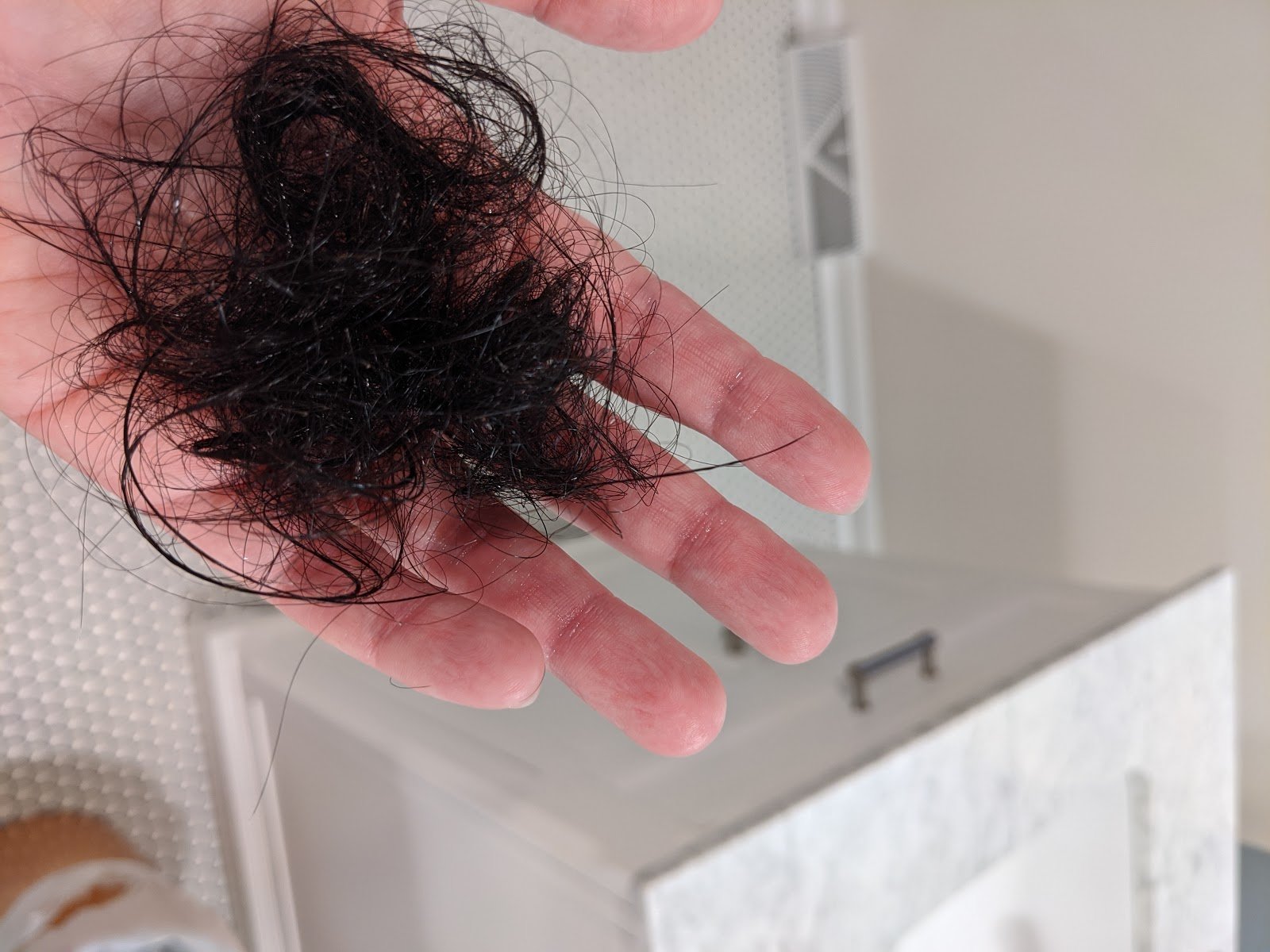Table Of Content
- View all posts by Megan Noe, MD, MPH, MSCE
- How Stress Can Affect Hair Loss And What To Do About It
- inherited genetic disorders and inflammatory diseases
- How common is hair loss after Covid-19?
- COVID may have eroded doctors' belief that they are obligated to treat infectious patients
- in 5 US retail milk samples test positive for H5N1 avian flu fragments

Compare that to the autoimmune condition alopecia areata, which results in loss of hair on the head and elsewhere on the body. In fact, telogen effluvium is really considered hair shedding rather than hair loss because it is temporary. Telogen effluvium causes noticeable hair shedding, but that’s all you should experience. If you have a rash, itchy scalp, or burning, something other than telogen effluvium is likely causing your hair loss, and it’s time to see a dermatologist. Alopecia areata, on the other hand, is an autoimmune condition that causes the body to send a misguided directive to attack the hair follicles, which leads to patchy or overall baldness, explains Dr. Ziering.
View all posts by Megan Noe, MD, MPH, MSCE
A dermatologist can provide a proper diagnosis, and select a personalized treatment that will help restore health to you hair and scalp. The caffeine also boosted hair root width and prolonged the growth phase of hair. It had a growth-promoting effect when tested on female hair follicles as well.
How Stress Can Affect Hair Loss And What To Do About It
The Fc region has sites for binding to Fc receptors on effector cells and normally its major function is to clear the antigen-antibody complexes via receptor-mediated endocytosis.25ADE works through interaction with Fc and/or complement receptors. This review attempts to understand if the mechanism of effluvium post-COVID-19 is similar to that seen with any other infections, as a response to stress created by febrile episodes or whether COVID-19 infection has a direct impact on hair follicles. Our study also revealed that hair shedding was more common in women than men (75.5% vs. 54.6%). Moreno-Arrones et al. investigated 191 patients with TE who had been infected with COVID-19, 78.5% of whom were females [10]. TE is thought to be more common in females because they can undergo extreme stress, such as giving birth.

inherited genetic disorders and inflammatory diseases
Loss of taste and smell was one of the first symptoms most commonly ascribed to COVID-19 infections, but few studies have looked at the loss after 1 year, or in infections caused by newer variants. Furthermore, only a handful of studies have been based on smell and taste tests. While sudden or extreme hair loss can be alarming, there are often simple solutions. By addressing the underlying cause and making some lifestyle changes, you may be able to stop or prevent hair loss. Because it’s a vasodilator, caffeine may also help improve blood flow to your scalp, promoting hair growth. While research on this remedy is limited, the juice did appear to promote hair growth in 20 of the 23 participants who tried it in a small 2002 study.

According to Sheikh, telogen effluvium "occurs when stress or illness triggers much more shedding than the typical 50 to 100 hairs a person loses per day." "Most people with post-COVID conditions experienced symptoms days after their SARS CoV-2 infection when they knew they had COVID-19, but some people with post-COVID conditions did not notice when they first had an infection," the CDC states. The hair loss can last for up to six months, according to the NLM, but chronic telogen effluvium can extend beyond that timeframe. On a healthy scalp, roughly 85% of hairs are said to be known as "anagen" or "actively growing." Another 15% are typically "telogen," which means they are resting.
And while it’s always easier said than done, lowering your stress levels may also help. “Practicing self-care and engaging in things such as meditation and breathing exercises can be helpful as you deal with COVID-related hair loss,” Dr. Ziering suggests. Certain causes of inflammation in the scalp can also lead to hair loss. For example, the inflammation in scalp psoriasis—which shows up as red, scaly, plaques—can damage the hair follicles. Scalp psoriasis can also be itchy, and scratching and picking the scalp can exacerbate follicle damage and increase hair loss.
The 16 Best Hair Growth Oils of 2024, Tested and Reviewed - PEOPLE
The 16 Best Hair Growth Oils of 2024, Tested and Reviewed.
Posted: Thu, 25 Jan 2024 08:00:00 GMT [source]
But you’ll need enough hair to donate to the transplant, and you’ll need to wait several months for it to grow. There’s some research to suggest that caffeine may help with hair growth and slow down hair loss. In one small 2016 study involving 9 people, participants saw results after receiving as little as 4 minutes of massage a day for 24 weeks. In a small 2014 study, 11 participants saw 30% more growth in thinning areas after 4 PRP sessions. Pricing ranges from $1,500 to $3,500 for your first 3 treatments, and it’s unlikely to be covered by insurance.
Losing Your Hair After COVID-19? There Is Good News - University of Utah Health Care
Losing Your Hair After COVID-19? There Is Good News.
Posted: Tue, 15 Mar 2022 07:00:00 GMT [source]
Patient Services
Not much research has been done on telogen effluvium as it relates to Covid-19 specifically, but in her practice, Dr. Jackson-Richards has noticed that the condition seems less common in people who’ve had mild Covid-19. Emotional stress (say, from the death of a loved one or a divorce) can also trigger telogen effluvium. There’s been plenty of stress to go around during the past year—for caregivers, for those grieving loved ones, for people who’ve lost their jobs, for, well, everybody. The content published in Cureus is the result of clinical experience and/or research by independent individuals or organizations. Cureus is not responsible for the scientific accuracy or reliability of data or conclusions published herein.
in 5 US retail milk samples test positive for H5N1 avian flu fragments
Recognition of this phenomenon may facilitate realistic expectations for both patients and physicians regarding the timelines for hair loss and recovery. While many people think of this as hair loss, it’s actually hair shedding. It happens when more hairs than normal enter the shedding (telogen) phase of the hair growth lifecycle at the same time.
Dermatologists are tracking COVID-19 survivors who continue to have symptoms, called long-haulers, to find out for sure if what they are experiencing is telogen effluvium or something related to ongoing illness or inflammation. The hair loss that results from COVID-19 usually appears 2 to 3 months after the infection. It can take 3 to 6 months before the hair returns to its original fullness. It’s also important to de-stress as much as possible, as stress may prolong the duration of hair loss and stall regrowth. TE happens when a stressor causes a large amount of hair to stop growing and enter into the resting (telogen) phase.
Michelle Crouch is a contributing writer who has covered health and personal finance for some of the nation's top consumer publications. Her work has appeared in Reader's Digest, Real Simple, Prevention, The Washington Post and The New York Times . She did buy some Nioxin shampoo, which she heard can help with thinning hair. We’ll send newsletters full of healthy living tips right to your inbox. The study was conducted in compliance with the ethical standards of the journal.

No comments:
Post a Comment